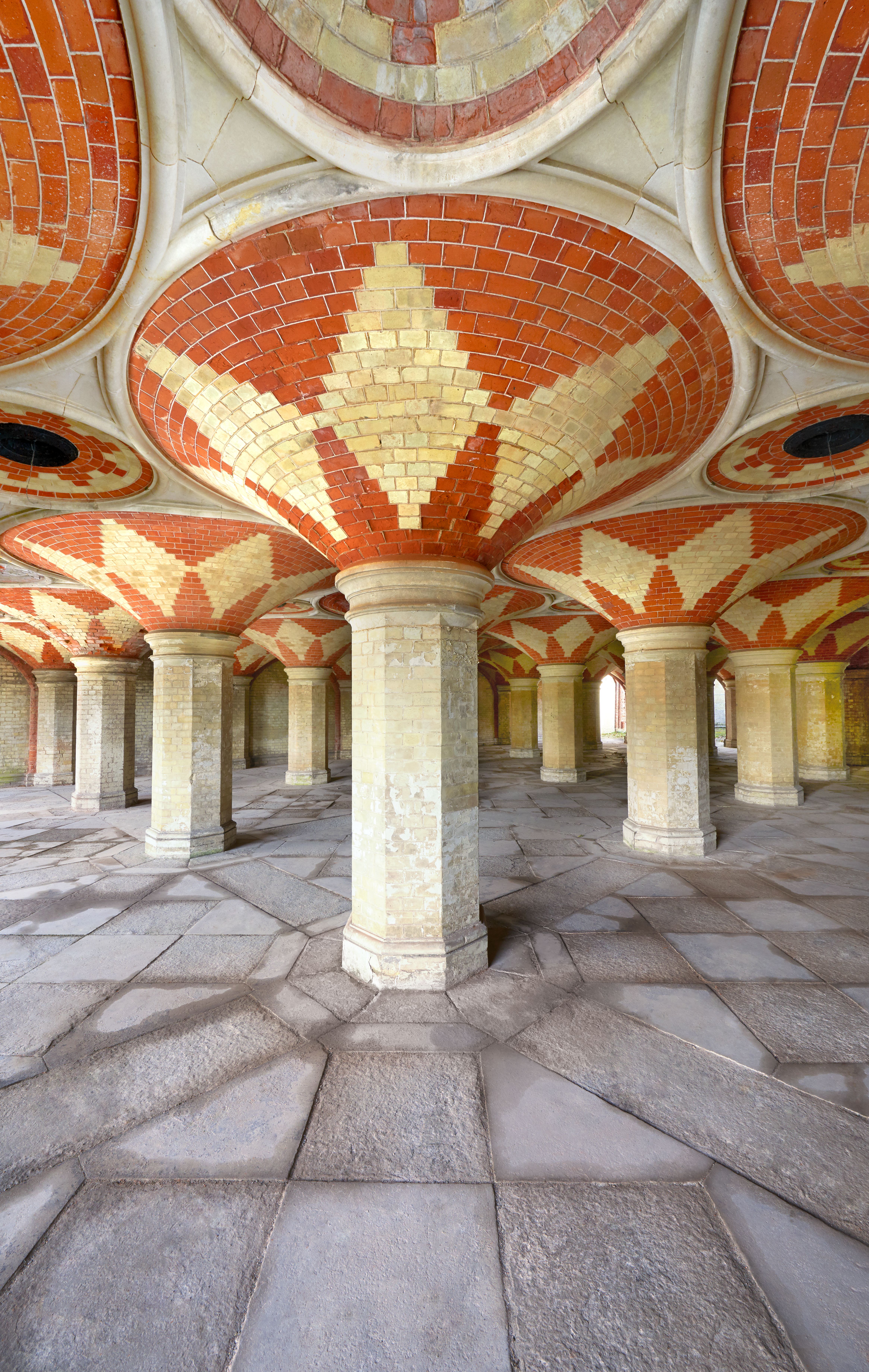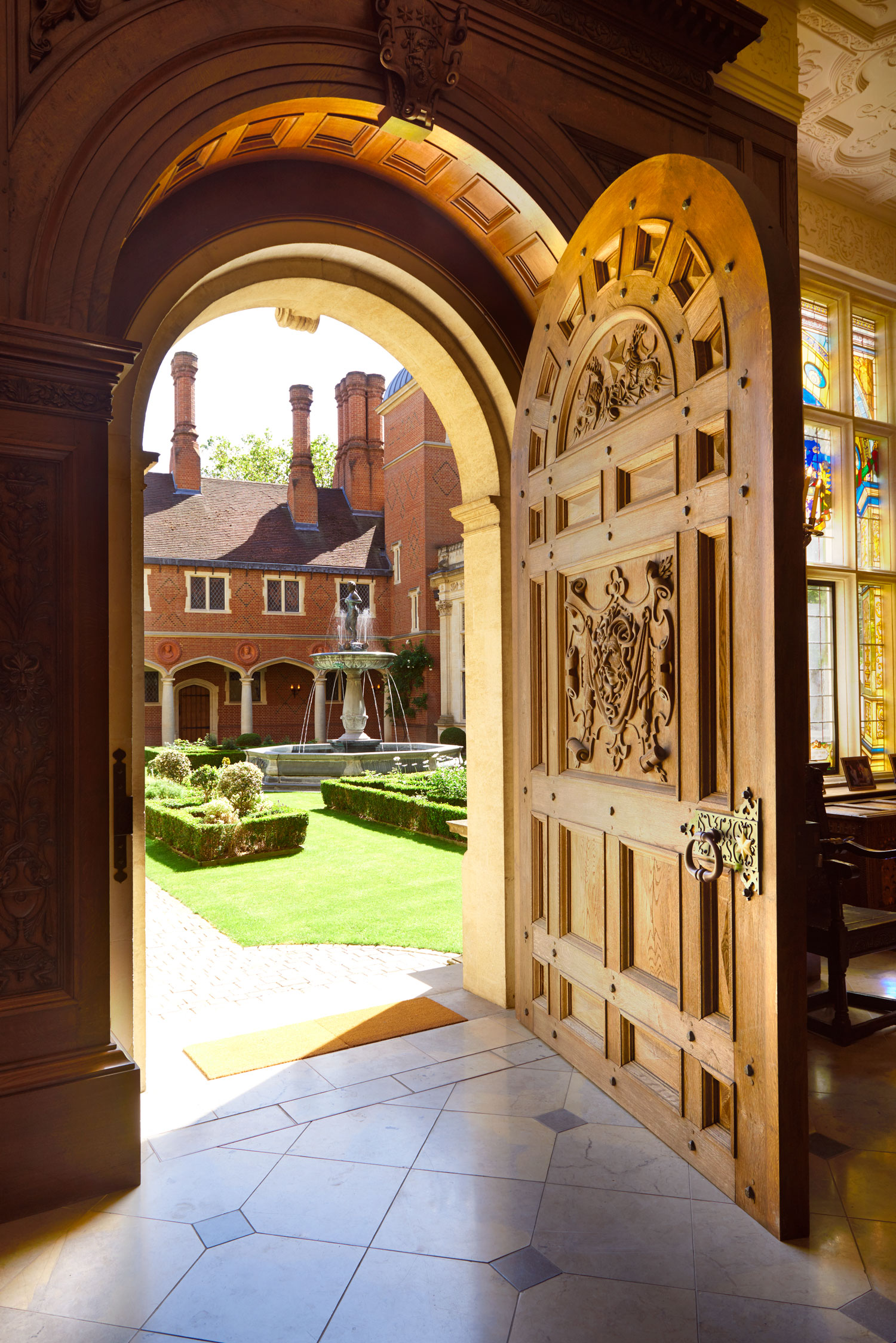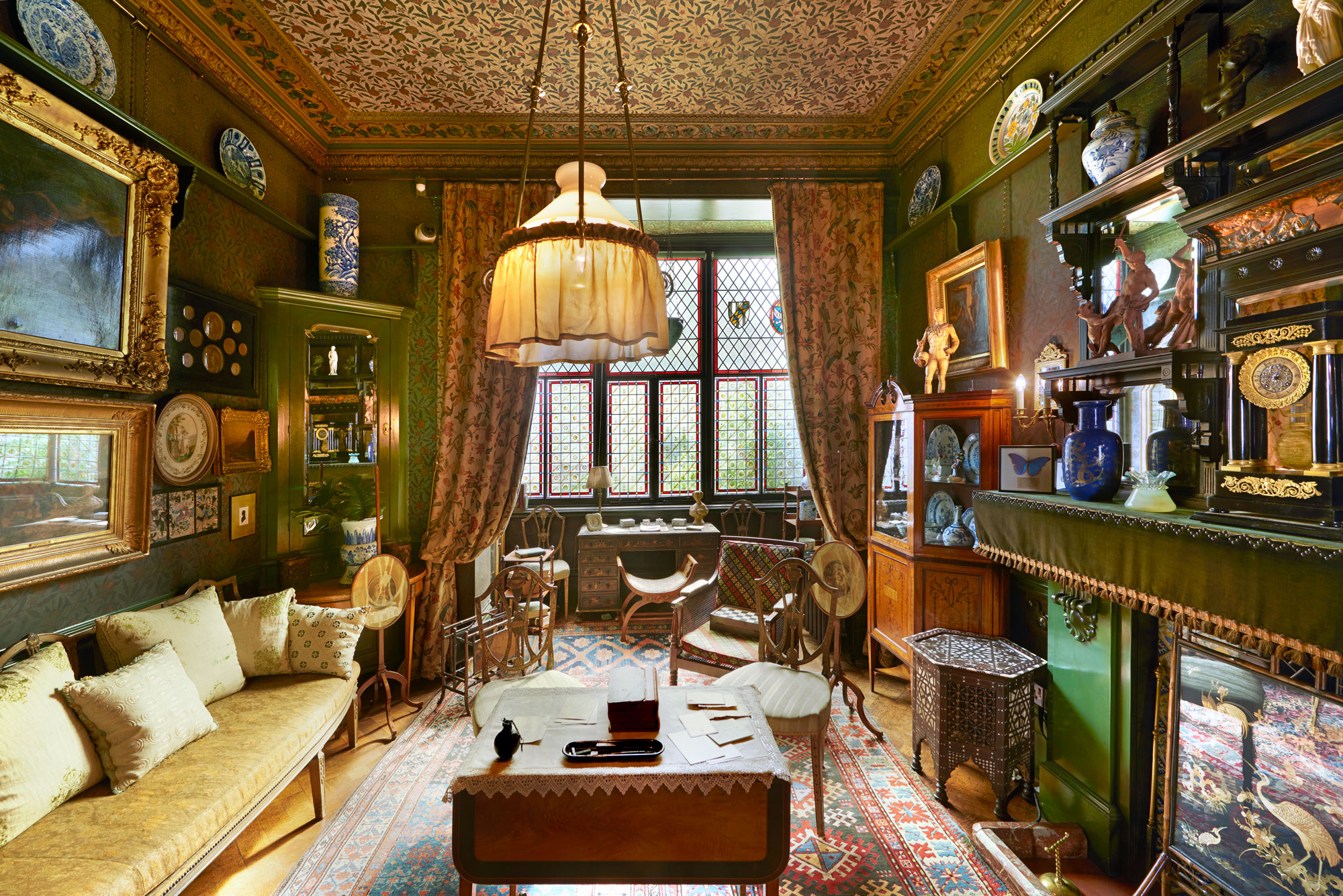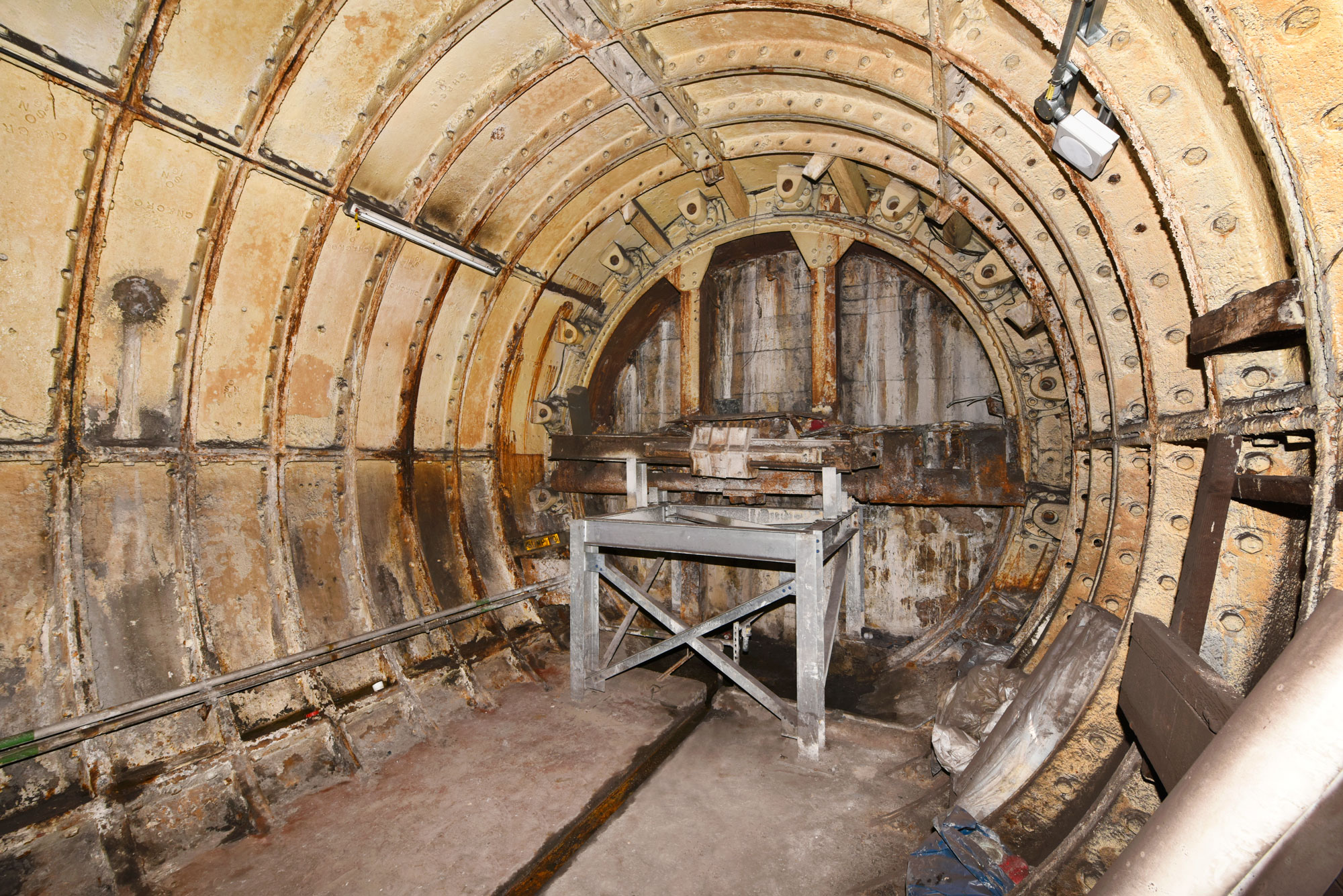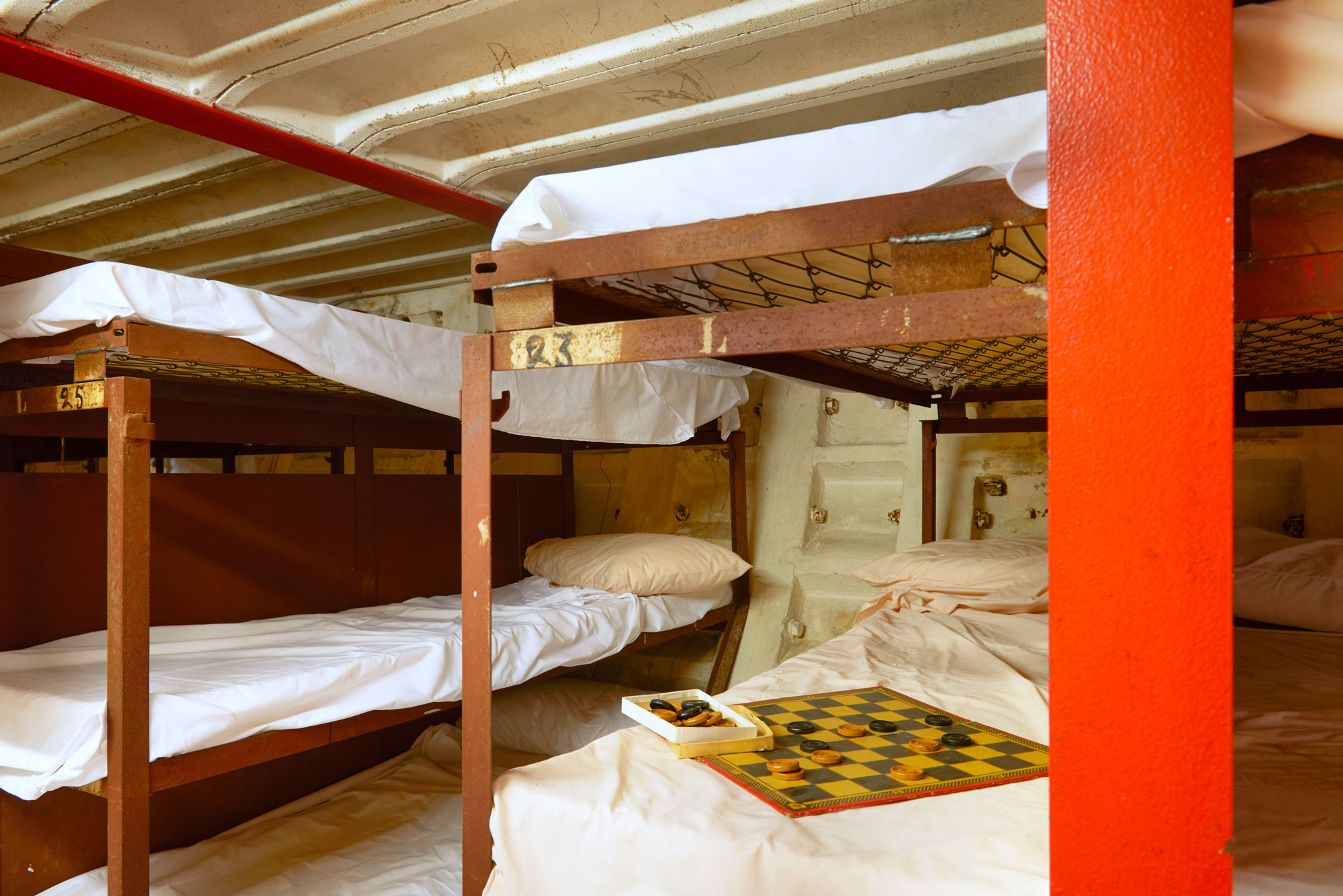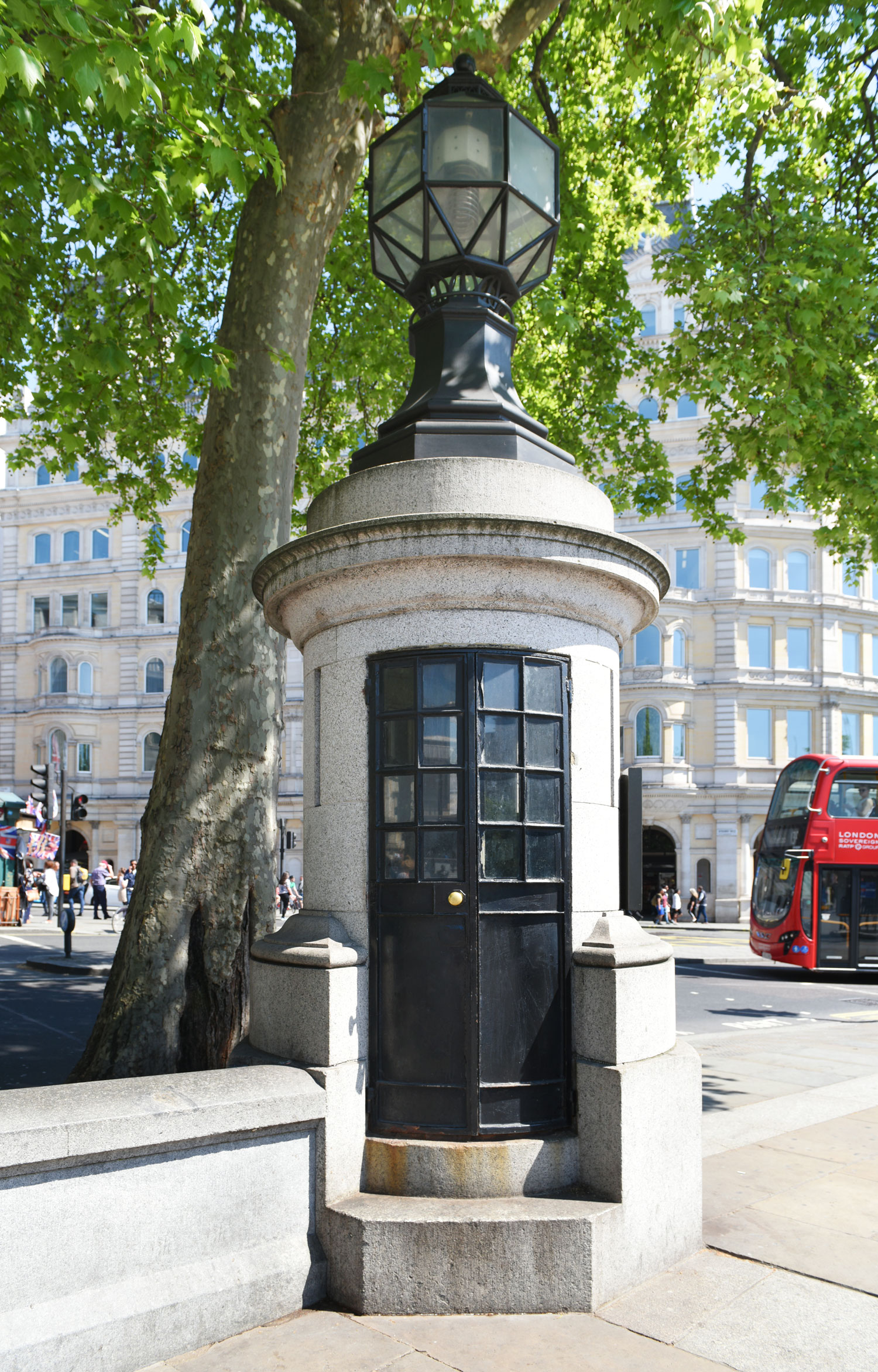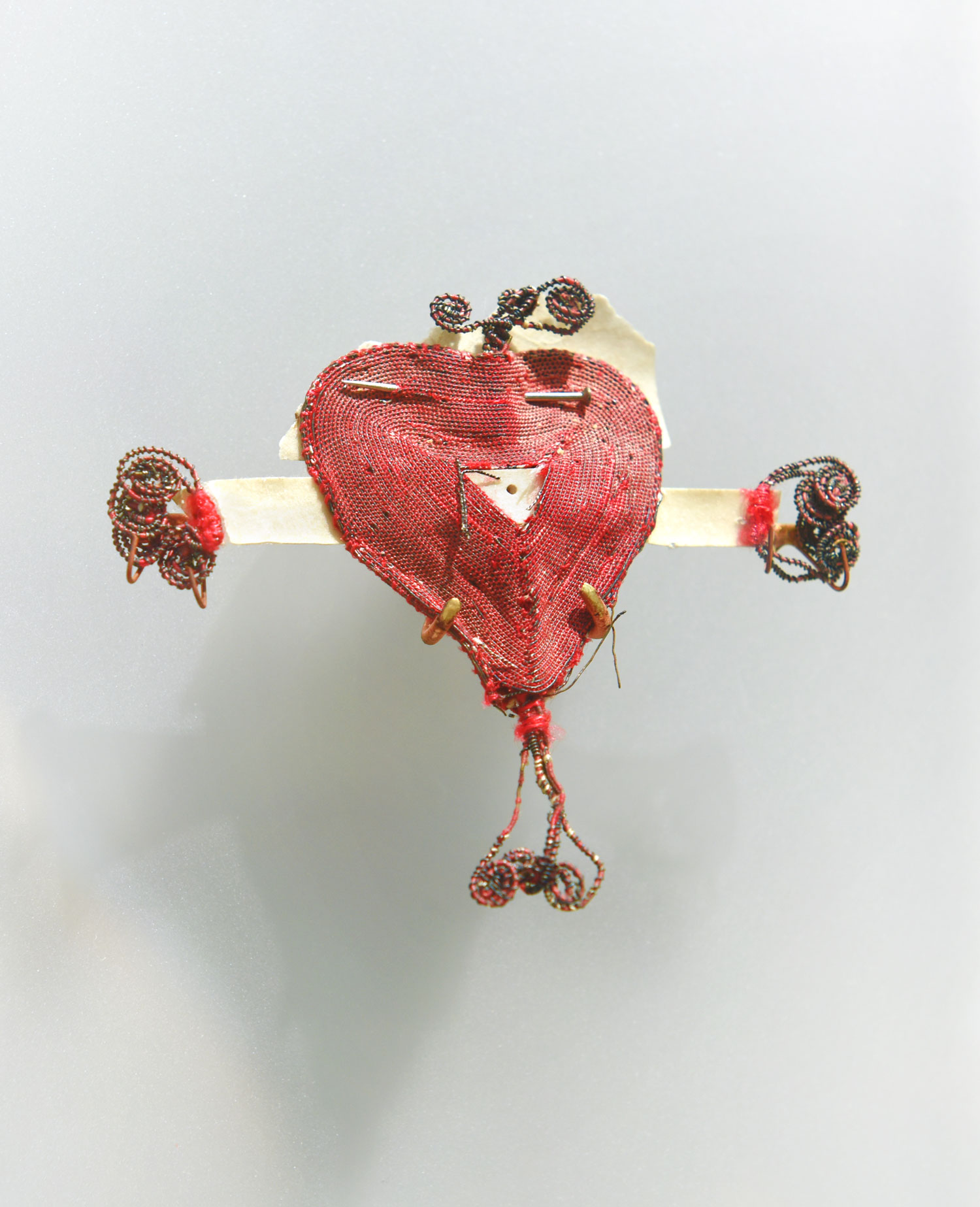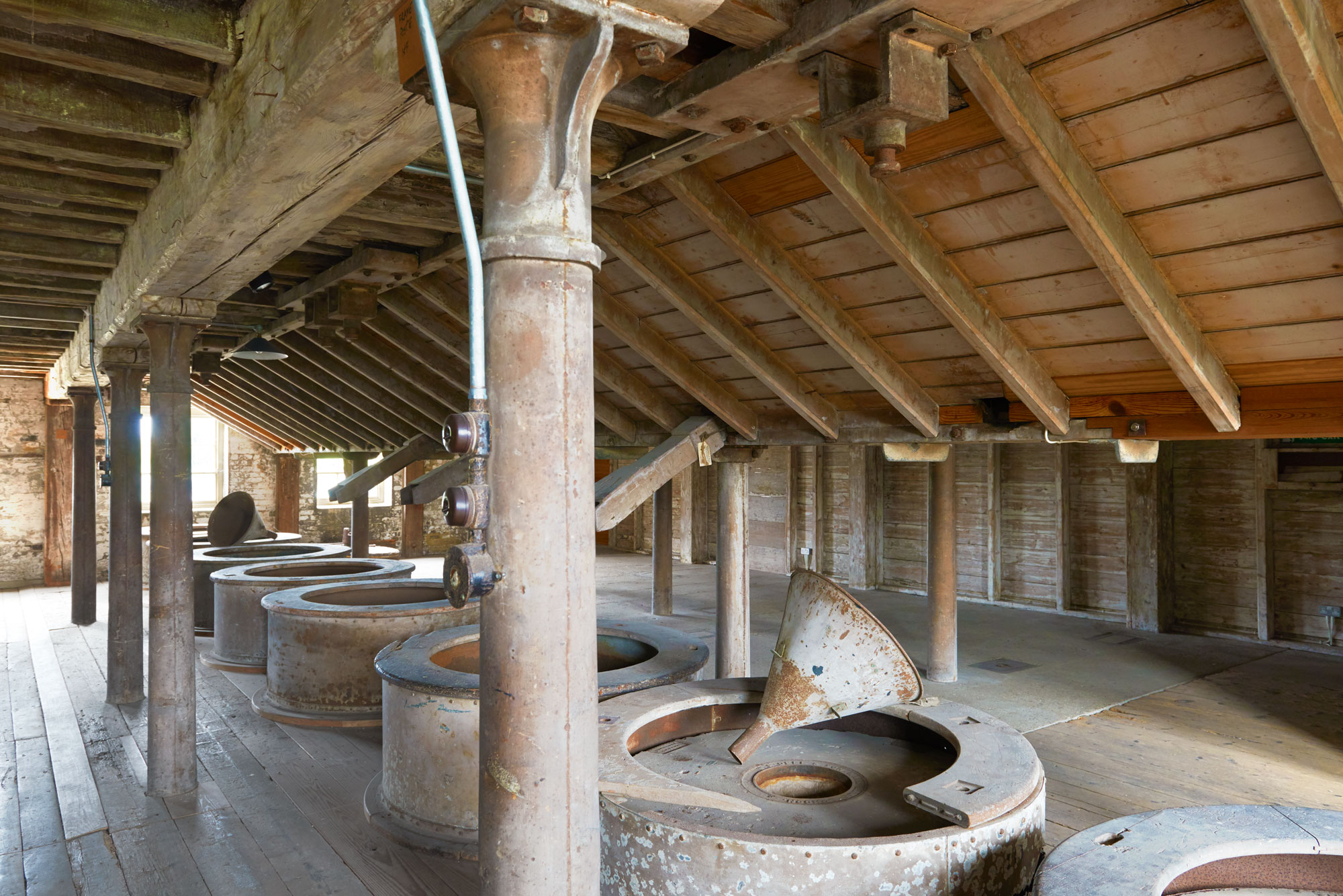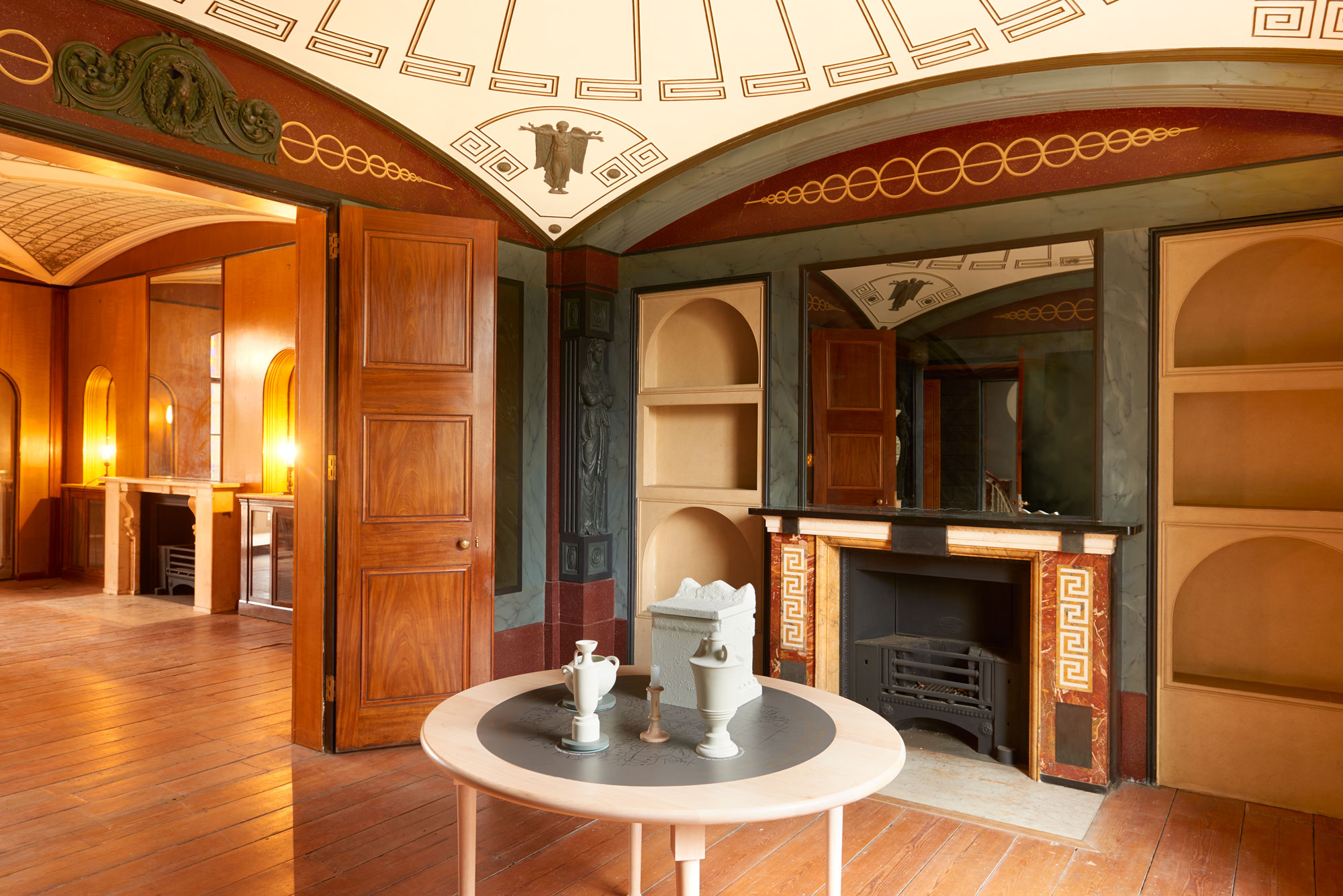Crystal Palace Subway
London’s vast and intricate rail system has lost hardly any of its passenger-carrying tracks since the first lines opened in the 1830s. An ornate subway at Crystal Palace marks a rare exception: a beautiful, isolated relic of a vanished branch line and a reminder of the huge exhibition hall it once served.
The vaulted subway of octagonal columns provided a pedestrian link from a lost terminus station. It was intended to channel first-class passengers direct from the platforms to the main floor of the palace through a courtyard. The nearby Dulwich College estate exerted influence on the high-concept design of the subway and station, which became known as Crystal Palace High Level. The subway has fan vaults resembling church architecture. Patterns on the vaulting are picked out in red and cream bricks. On the ceiling circular roundels in stone enclose more decorative brickwork and iron gaslight fittings. The well-lit sunway was “designed to intrigue and excite”, in the words of conservators.

